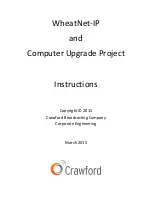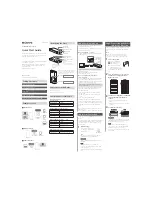
2
I.
Overview
Conversion of our facilities to the WheatNet-IP AOIP architecture has several components:
·
Upgrade or replacement of existing Nexgen computer hardware to Windows7-32 compliant
hardware
·
Installation of Nexgen on the new or upgraded hardware
·
Creation of a WheatNet-IP class C gigabit VLAN network
·
Installation of WheatNet-IP drivers on Nexgen hardware
·
Installation of Wheatstone IP Blade3 hardware in the facility
·
Configuration of Nexgen for using the WheatNet-IP drivers
·
Mapping of sources and destinations
Those facilities that will be converting production rooms to Wheatstone surfaces and WheatNet-IP
Blades have some additional steps to take for each studio being converted:
·
Removal of the existing mixer and all audio wiring
·
Installation of Wheatstone control surface and power supply
·
Installation of WheatNet-IP mix engine, console blade
·
Connection of local audio sources and destinations to the console blade
We have found from experience that the best order to follow in the facility conversion process is:
1.
Production Rooms
2.
Audio Servers
3.
Control Rooms
This order serves several purposes.
First, it allows engineers to become familiar with the Wheatstone hardware and the WheatNet-IP
architecture while working on a non-critical facility (production room). Then, assuming that at least
some of the production room Nexgen computers will be replaced with new computers, it frees up one
or more replaced NexGen computers for conversion as audio server (ASERV) machines (see the Section
III for more information on ASERV conversion).
Conversion of ASERV machines is next in the order. While arguably a more critical component, ASERVs
are done next because this leaves the still-unconverted CTRL workstations available for Emergency
Control Room (ECR) operation while the ASERVs are being converted. ASERV conversion is fairly
straightforward but with a few additional steps, depending on the individual situation. The Utility Mixer
in each ASERV blade is used for switching functions that were formerly handled by an external switch
(Broadcast Tools or Sine Systems). In satellite operations, “relays” from the satellite program are routed
through the ASERV blade in software to Nexgen where they trigger events just as “optos” did in the
analog world.



































